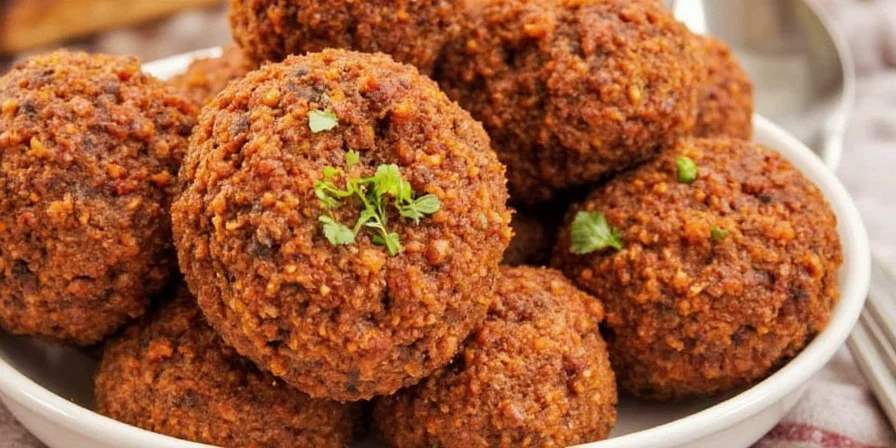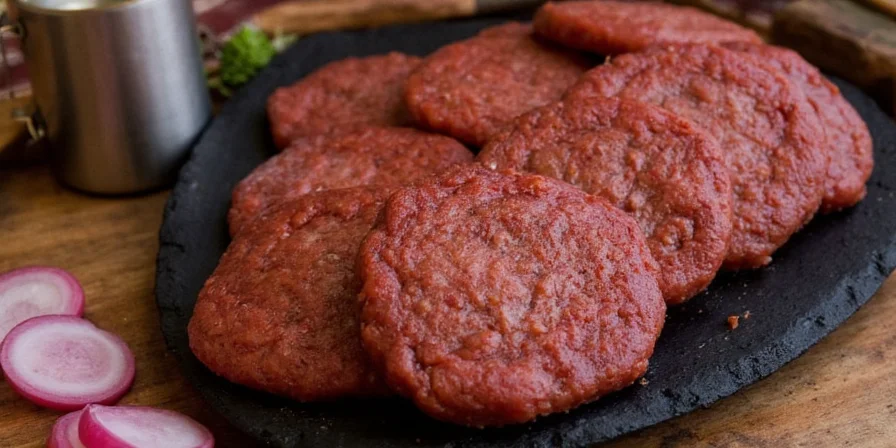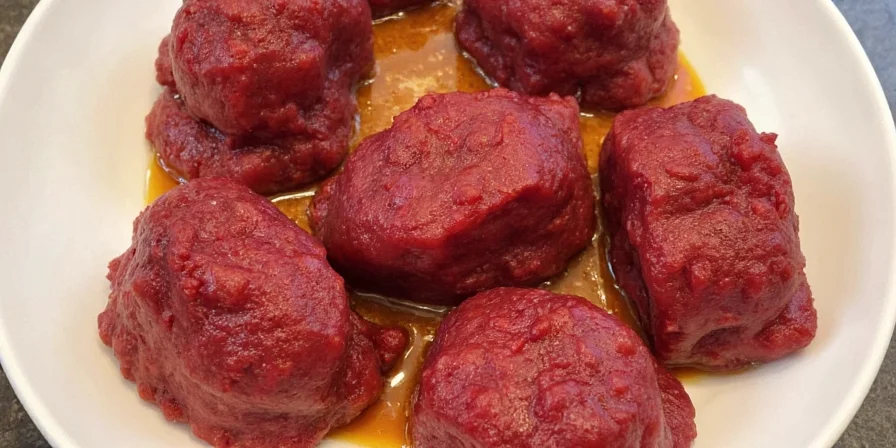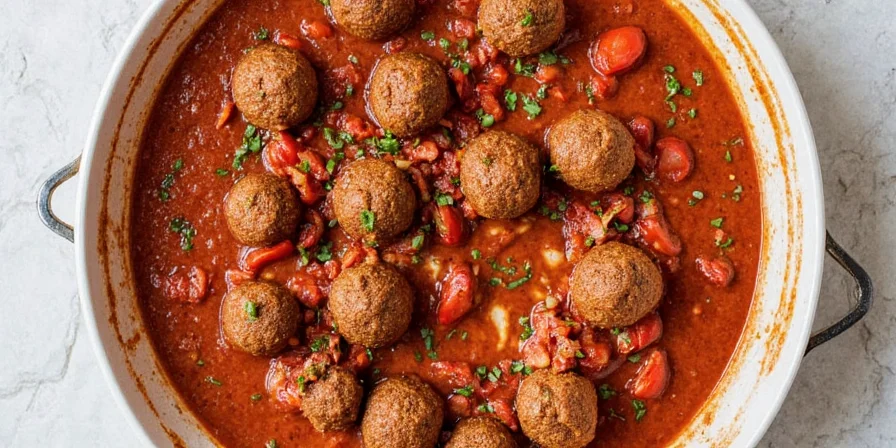Kofte Chronicles: The Spicy Soul of Turkish Street Food – 10 Must-Know Secrets!
Imagine biting into a sizzling, charcoal-grilled Turkish kofte on a bustling Istanbul street corner. The scent of cumin, allspice, and garlic hits your nose before the first bite even touches your tongue. Welcome to the world of kofte – the spiced-up heart of Turkey’s culinary identity.
In this blog, we’ll dive deep into what makes Turkish kofte not just a dish, but an art form. From spice blends that tell stories to meat-handling tips you didn’t know you needed, this guide is your backstage pass to mastering the flavors of Anatolia. Whether you’re a professional chef or a curious foodie, there’s something spicy waiting for you!
Table of Contents
- What Exactly Is Kofte Anyway?
- The Secret Spice Blend Behind Perfect Kofte
- Meat Magic: Choosing and Preparing Your Base
- How to Shape Kofte Like a Pro (Without Breaking a Sweat)
- Grilling Tips That Will Make Your Kofte Sing
- Serving Suggestions That Bring the Heat (and Flavor)
- Regional Twists: How Different Parts of Turkey Do Kofte Differently
- Home Cook vs. Restaurant: Can You Tell the Difference?
- Vegetarian? Don’t Worry – We’ve Got You Covered Too!
- Kofte Fun Facts to Impress at Your Next BBQ
What Exactly Is Kofte Anyway?
You might think kofte is just “meatballs,” but oh honey, it’s so much more than that! Originating from the Persian word “koft,” meaning “to grind” or “to pound,” kofte in Turkey comes in many forms – some are grilled like skewers, others are fried, and some are even baked.
The most famous version is the işkembe kofte – a firm, elongated shape perfect for grilling without falling apart. But don’t be surprised if you see other shapes and sizes depending on where you go in Turkey!
The Secret Spice Blend Behind Perfect Kofte
If you thought the meat was doing all the heavy lifting, think again! Turkish kofte owes its soul to the spices. Here’s a typical lineup:
| Spice | Role | Typical Quantity per 500g Meat |
|---|---|---|
| Cumin | Earthy warmth and smokiness | 1 tsp |
| Allspice | Complex sweetness with a hint of pepper | ½ tsp |
| Paprika | Color and subtle heat | 1 tsp |
| Black Pepper | Bite and balance | Freshly ground, to taste |
| Salt | Flavor enhancement | 1–1.5 tsp |
| Garlic | Aromatic depth | 2 cloves, finely minced |

Mixing the spices well into the meat ensures every bite is bursting with flavor. Don’t overdo it though – too much can overpower the delicate texture of the meat.
Meat Magic: Choosing and Preparing Your Base
Kofte starts with meat – but not just any meat. Traditional Turkish kofte uses a mix of beef and lamb (or sometimes veal), with a fat content between 15% and 20%. Why the fat? It keeps the kofte juicy and prevents them from drying out on the grill.
- Beef: Provides structure and depth
- Lamb: Adds richness and a slightly gamey kick
- Onion: Grated and squeezed for moisture and mild sweetness
Pro tip: Use a cold surface when mixing your meat – a marble countertop or chilled cutting board works wonders in keeping everything fresh and workable.
How to Shape Kofte Like a Pro (Without Breaking a Sweat)
Shaping kofte can be tricky, especially if you’re new to the game. Here’s how to make sure they stay together and cook evenly:
- Cool Everything Down: Chill your hands, tools, and even the meat briefly before shaping. Warm meat sticks like gum on a shoe.
- Use a Skewer or Rolling Technique: For traditional cylindrical kofte, roll the meat around a thick metal skewer or use two knives to shape as you go.
- Distribute Evenly: Keep the thickness consistent so they cook through without burning the outside.

Don’t worry if they look a little rustic at first – practice makes perfect, and your taste buds will thank you anyway.
Grilling Tips That Will Make Your Kofte Sing
Grilling is where kofte becomes iconic. Here’s how to nail it:
- Preheat the Grill: Get those coals nice and hot. Charcoal gives the best smoky kiss, but gas works fine if done right.
- Oil the Grates: Brush the grill with oil-soaked paper towels to prevent sticking.
- Don’t Flip Too Soon: Let each side sear properly before turning. Think 4–5 minutes per side for medium doneness.
- Baste with Olive Oil or Melted Butter: Adds richness and helps create that gorgeous golden crust.
And remember – never press down on the kofte while grilling. That’s how you say goodbye to all the juices and hello to dry disappointment.
Serving Suggestions That Bring the Heat (and Flavor)
Once your kofte hits the plate, it’s time to dress it up right. Traditional sides include:
- Pide or Simit: Crusty bread for catching every last crumb of meat and sauce
- Turkish Salad: Fresh diced tomatoes, cucumbers, and onions dressed lightly with olive oil and lemon
- Yogurt Sauce: Often flavored with garlic or mint to cool things down
- Hot Peppers: Pickled or fresh, for those who like it fiery
Pair it all with a glass of ayran (Turkish yogurt drink) or a strong çay (tea) for the full cultural experience.
Regional Twists: How Different Parts of Turkey Do Kofte Differently
Turkey is big, and kofte varies from region to region like dialects of a delicious language:
| Region | Kofte Style | Special Ingredients |
|---|---|---|
| Istanbul | İskender Kofte | Served over pide with tomato sauce and melted butter |
| Adana | Adana Kebab | Extra chili, very spicy minced meat skewers |
| Ankara | Çöp Şiş | Small cubes of seasoned meat on skewers |
| Urfa | Urfa Kofte | Smoked paprika, cinnamon, and sun-dried techniques |

If you ever travel through Turkey, treat yourself to a kofte tour – your taste buds will thank you!
Home Cook vs. Restaurant: Can You Tell the Difference?
Restaurant kofte often has one advantage – experience. But that doesn’t mean you can’t replicate the magic at home! Here’s how:
- Professional Mixers: Restaurants often use mixers to emulsify the meat better, giving it a firmer texture.
- Resting Time: Pros let their kofte rest in the fridge for a few hours, allowing flavors to meld and textures to set.
- High-Heat Grills: Commercial grills get hotter and more even than most home setups, but with good technique, you can close the gap.

Bottom line: You don’t need fancy equipment – just patience, love, and the right recipe!
Vegetarian? Don’t Worry – We’ve Got You Covered Too!
Craving kofte but ditching the meat? No problem! Try these plant-based options:
- Chickpea Kofte: Blended chickpeas, oats, herbs, and spices shaped into balls and pan-fried
- Mushroom-Walnut Kofte: A hearty umami-rich combo perfect for grilling
- Eggplant-Lentil Kofte: Moist, savory, and packed with fiber

Just because it’s vegetarian doesn’t mean it skimps on flavor. In fact, these versions might surprise even the most die-hard carnivores at your table!
Kofte Fun Facts to Impress at Your Next BBQ
Time to drop some knowledge bombs at your next backyard gathering. Impress your friends with these spicy tidbits:
- Kofte is believed to have originated in Persia but found a second home in Ottoman cuisine.
- The world's largest kofte was made in Turkey in 2017 and weighed over 80 kg!
- Some regions stuff kofte with cheese or eggs for extra surprise inside!
- The word "kebab" comes from the same root as "kofte" – both tied to fire and grilling traditions.

Now you’re ready to talk turkey – or should we say, talk kofte?
Conclusion
Whether you’re a passionate home cook or a seasoned chef looking to expand your global flavor repertoire, Turkish kofte offers a gateway to centuries of spice tradition and culinary craftsmanship.
From selecting the perfect meat blend to mastering the art of shaping and grilling, each step brings you closer to tasting the true essence of Turkey. And let’s not forget – whether you're eating it off a paper plate by the Bosphorus or making it in your own kitchen, kofte is about joy, connection, and flavor.
So go ahead. Roll up your sleeves, grab that meat, and season like you mean it. The world of Turkish kofte awaits – and trust us, it tastes amazing!










 浙公网安备
33010002000092号
浙公网安备
33010002000092号 浙B2-20120091-4
浙B2-20120091-4